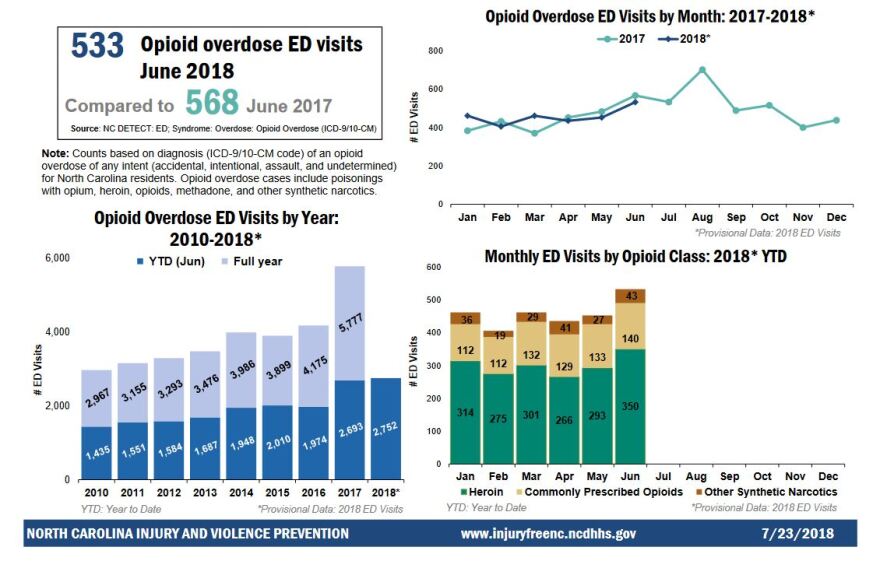Last year, public attention turned to the opioid crisis for months. Policymakers implemented plans to curb overdoses and providers across the health care spectrum vowed to do their part to stem the crisis.
Data for the first half of 2018 show this year might be even worse than 2017.
Through the end of June, there were 2,752 opioid overdose emergency department visits in North Carolina, or 15 per day, on average, a 2 percent increase from last year, according to data from the N.C. Department of Health and Human Services. While 2 percent might not sound like a lot, remember that 2017 was hoped to be the height of the crisis. Opioid overdose ED visits this year are almost 40 percent higher than for the first half of 2016.

But that's not to say the interventions aren't working, says Dr. Abhi Mehrotra, a UNC Health Care Emergency Department Medical Director.
"If it weren't for some of the interventions that are in place currently – that are starting to be funded – I believe it would actually be worse," he said.
One of the factors impacting drug users in 2018 is the influx of fentanyl, a synthetic opioid that is many times more potent than heroin. Robert Childs, executive director of the North Carolina Harm Reduction Coalition, says fentanyl has found its way into nearly every street drug. That includes street pills and cocaine, not just heroin.
"There's more fentanyl in the drug supply, especially more fentanyl in drugs that people may not suspect has fentanyl," Childs said. "People are getting a drug that's a lot stronger than they're expecting, or a drug they're not expecting. And that can lead to drug overdoses and respiratory failure."
Childs advocates for programs that allow users to test their drugs in order to see if they are laced with fentanyl, or for clinics that allow users to inject drugs under medical supervision. These types of programs, , have not gained traction in the United States.
Mehrotra said emergency physicians are looking at how they treat pain, and how that might help reduce opioid use. "Are there non-opioid alternatives that we can utilize so that we can treat pain for a patient, but also not expose them to these medications that have long-term risks," he said.









